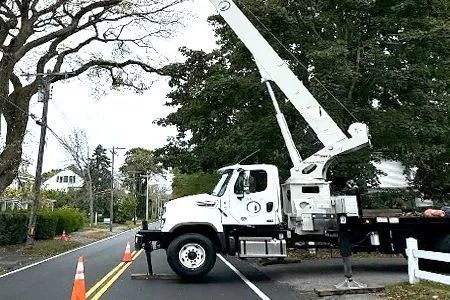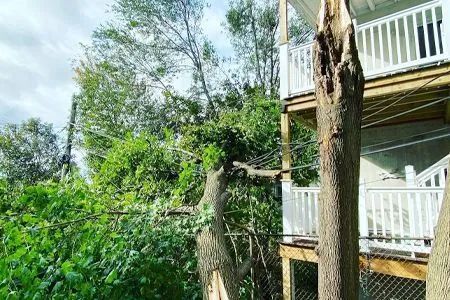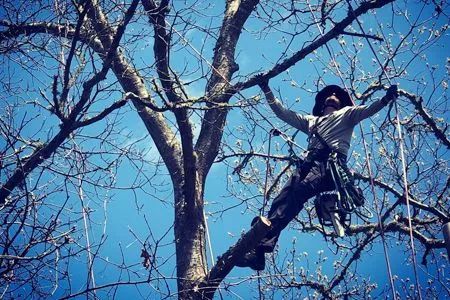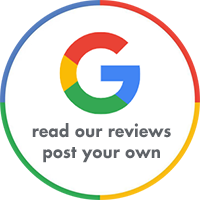JSK Tree Care Blog

A dying tree is more likely to drop branches or fall during storms, putting people and structures at risk. Because tree decline is not always obvious to the untrained eye, it’s important to recognize the early warning signs and schedule a professional evaluation before the situation worsens. At JSK Tree Care, we can identify dying trees and safely remove them as needed. Here are four common signs that a tree could be dying and may need to be considered for removal. Branches Are Becoming Brittle or Breaking Easily If you find that limbs snap with little pressure or sections of the canopy fail to leaf out in spring, this can indicate that the tree is no longer receiving adequate nutrients. Large dead branches, in particular, pose a significant risk because they can fall unexpectedly. Persistent branch dieback is often a clear sign that the entire tree may be in decline. Fungal Growth Is Appearing Around the Base Fungal growth at the base of a tree could indicate internal rot. Fungi often take hold when a tree’s wood has weakened due to decay, which means the internal structure may be compromised. While not every mushroom growth signals a dying tree, consistent or widespread fungi are strong red flags. An arborist can assess the extent of decay and determine whether the tree remains structurally sound. The Tree Is Leaning More Than Usual A sudden or worsening lean is often a sign that a tree’s root system has been damaged or destabilized. Healthy trees typically grow upright unless they naturally lean toward sunlight. However, if you notice the tree leaning further with time or see soil lifting on one side of the root zone, it may be at high risk of falling. A leaning tree should always be evaluated promptly, especially if it is close to a structure or high-traffic area. Leaves Are Sparse, Discolored, or Failing to Grow A thinning canopy, premature leaf drop, or persistent discoloration can all signal that a tree is under severe stress. Nutrient deficiencies, disease, and root damage may be preventing the tree from sustaining healthy foliage. When large sections of the canopy fail to leaf out, it often indicates that the tree is in significant decline and may not recover. Tree Removal in Falmouth, MA For tree removal in Falmouth and the surrounding area, contact JSK Tree Care at 774-506-4655 . We offer expertise in both residential and commercial tree services in Falmouth. Feel free to give us a call to ask for an arborist estimate in Falmouth, MA!

At JSK Tree Care, our team strives to exceed our customers’ expectations by doing top-quality tree work at fair prices, all while getting the job done in a timely manner. No matter the scope of the work, our local arborists will work efficiently to complete it to the highest standards. And we’re grateful when our customers offer feedback about their experiences with our team. Here’s a look at some of our recent reviews. “Shay and his team at JSK Tree Care did a fantastic job removing several large trees from my property. Throughout the process they were on time, professional and courteous. They utilized all the right equipment including a state of the art crane to ensure no damage to the property or my neighbors. They completed the job on time and budget and left my yard clean and free of debris. I would not hesitate to recommend them, they were the right company for the job!” — Norman B. “JSK was referred by our regular arborist. They performed heavy pruning which required craning most of a large oak over our house in very tight working areas. Work was performed well by experienced team. Price was reasonable considering scope of work.” — Andrew M. “Shay and his team did a fantastic job with tree removals as well as trimming, pruning and stump removal. From the minute we met Shay, we knew we chose the right person. He’s prompt, even arrives early to his job sites, he’s professional, honest and hard working! The yard was left spotless when the job was done. He stuck with a very fair price on his estimate. I would highly recommend him!” — Lisa C. “Your guys do a great job at a good price. They were fast, very neat, professional and addressed any concerns I had. Your guys did a great job.” — Tim H. “We had a few big trees that needed to come down and looking for a local company. Read up reviews of a few companies and very impressed with all the reviews on JSK. Called Shay and from the moment we met him on our property, we hired him on the spot. Shay is incredibly knowledgeable and a nicest person. I never called anyone else after meeting Shay. His team, his price and the entire process were smooth, great clean up and they even cart away a few old trees that fell years ago. Our driveway is really narrow and I was resigned to loosing some of my plants, somehow the guys managed to do an amazing job without hurting any of my plants. Great job, thank you Shay and your team. Trust me, this is an incredible company!” — Celine O. Tree Service in Falmouth, MA For an experienced arborist in Falmouth and the surrounding area, contact JSK Tree Care at 774-506-4655 . We specialize in both residential and commercial tree services in Falmouth. Feel free to give us a call to request an arborist estimate in greater Falmouth, MA!

Storms can put tremendous stress on trees, especially those that are already weakened or unstable. High winds, heavy rain, and saturated soil can cause vulnerable trees to lose their balance or break apart, posing serious dangers to nearby homes, vehicles, and people. While healthy trees can often withstand harsh weather, certain warning signs indicate that a tree may be at an increased risk of falling. Identifying these signs early and taking action with the help of a professional arborist can help prevent costly damage and protect your safety. At JSK Tree Care, our local arborists are experts at identifying hazardous trees and safely removing them. Here are four warning signs that a tree may be more likely to crash down during a storm. Significant Leaning or Shifting A tree that is noticeably leaning, especially if the lean has become more pronounced over time, is a strong sign of instability. Leaning can occur due to weakened roots, soil erosion, or uneven weight distribution within the canopy. If the lean is sudden or accompanied by cracking in the soil around the base, it could mean the roots are failing, putting the tree at high risk of falling in strong winds. Splits in the Trunk Structural damage—such as large cracks, splits, or cavities in the trunk—can greatly reduce a tree’s ability to withstand the pressure of a storm. These weaknesses make it easier for the trunk to break apart under stress. Cracks near major branch unions or the base of the trunk are especially concerning and should be evaluated by a professional as soon as possible. Dead/Decaying Wood Dead branches or signs of internal decay—such as soft or hollow wood—indicate that parts of the tree are no longer structurally sound. Decay weakens the tree from the inside out, making it more prone to breaking during heavy winds. Fungal growth, such as mushrooms at the base, often signals root or trunk rot that can compromise stability. Root Problems/Uplifted Soil Healthy roots anchor a tree firmly in the ground. If you notice exposed roots, soil heaving, or cracks around the base, the tree’s root system may be failing. Storms with heavy rainfall can loosen already weakened roots, increasing the likelihood of the tree toppling over. Root issues are often hidden, so surface signs should never be ignored. Tree Removal in Falmouth, MA For tree removal in Falmouth and the surrounding area, contact JSK Tree Care at 774-506-4655 . Feel free to give us a call to request an arborist estimate in Falmouth!

Trees are an important part of your landscape, but caring for them isn’t always straightforward. From pruning to hazardous removal, tree care often requires expertise beyond what most homeowners can handle safely on their own. That’s where an ISA-certified arborist comes in. These professionals have the training, certification, and experience to diagnose problems and provide solutions that protect both your trees and your property. At JSK Tree Care, our local ISA-certified arborists provide expert tree services in the greater Falmouth area. Here are four situations where calling an ISA-certified arborist is the best decision. When a Tree Needs to Be Removed Tree removal can be dangerous, especially if the tree is large, diseased, or located near a house, power line, or roadway. An ISA-certified arborist has the proper equipment and training to remove trees safely and efficiently. They can also determine whether removal is absolutely necessary or if other solutions are available. When Trees Show Signs of Disease or Pests Diseases and pests can spread quickly through your trees and cause irreversible damage if not addressed early. If you notice discolored leaves, unusual growths, or increased insect activity, an ISA-certified arborist can identify the problem and recommend the right course of action. Their knowledge helps preserve the health of your trees and prevent issues from spreading across your property. When Trees Need Structural Pruning Pruning may seem simple, but improper cuts can weaken a tree, invite disease, or ruin its shape. Structural pruning is especially important for young trees, as it sets them up for healthy growth in the future. An ISA-certified arborist understands how and where to make cuts to improve tree structure, reduce hazards, and maintain natural beauty without harming the tree. When Storm Damage Has Occurred Severe storms often leave behind broken limbs, split trunks, or even partially uprooted trees. These situations can be hazardous if large branches are dangling or the tree is unstable. An ISA-certified arborist can assess the extent of the damage and decide whether the tree can be saved or if removal is necessary. They also ensure cleanup is done safely. ISA-Certified Arborist in Falmouth, MA For an ISA-certified arborist in Falmouth and the surrounding area, contact JSK Tree Care at 774-506-4655 . We offer expertise in both residential and commercial tree services in Falmouth. Feel free to give us a call to arrange an arborist estimate in Falmouth, MA!


